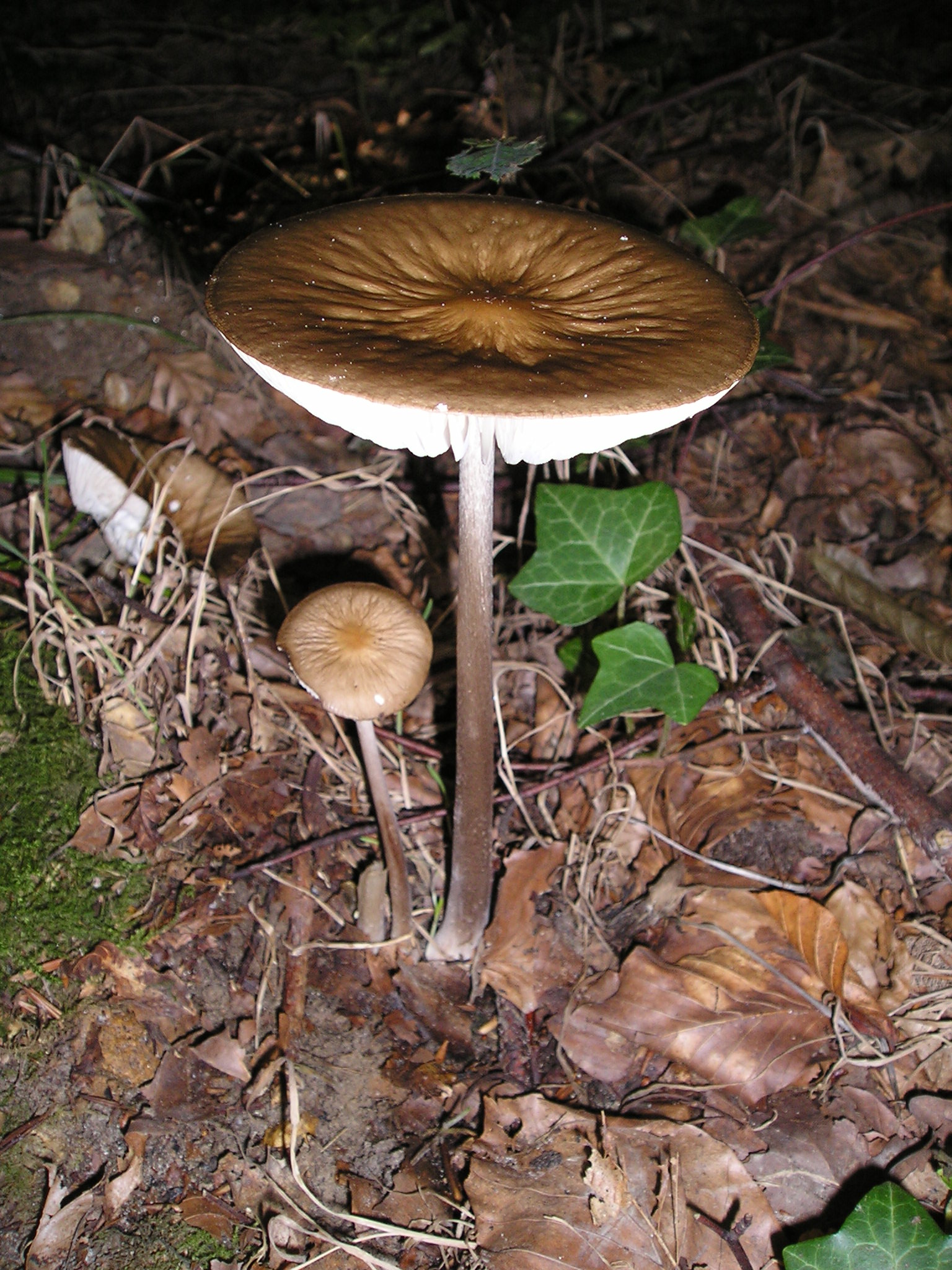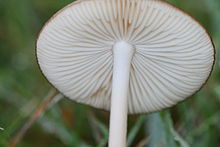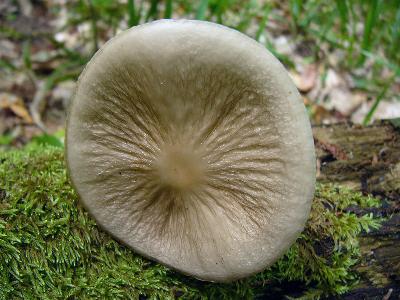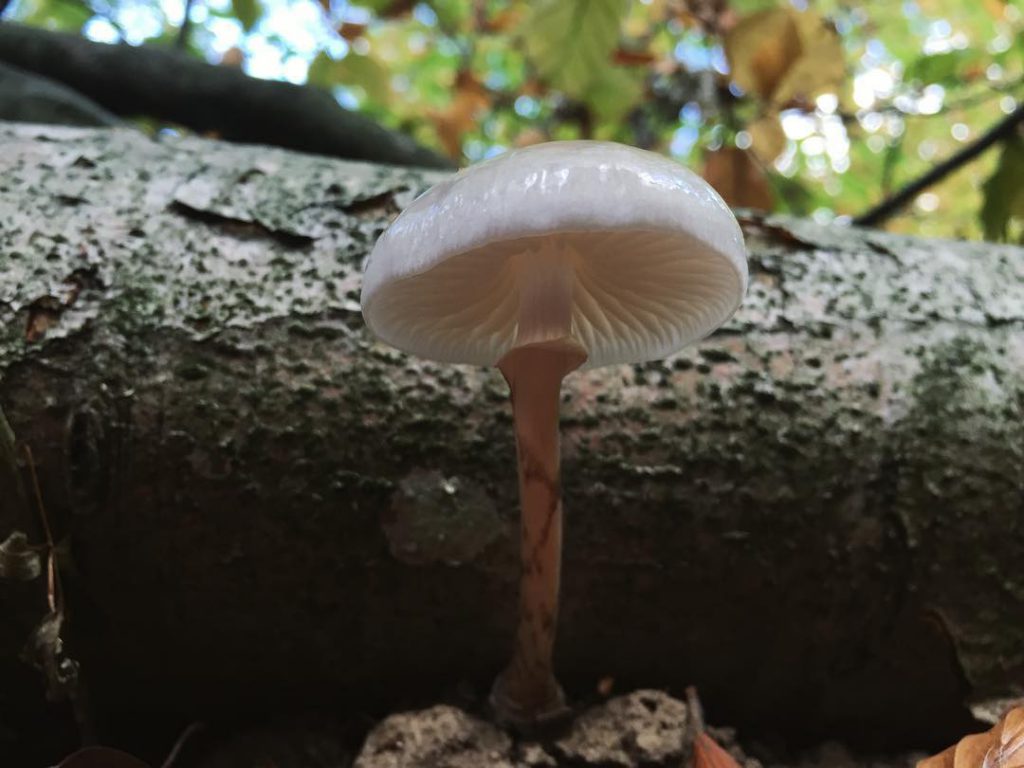Xerula root (Udemansiella, Hymenopellisradicata) what mushrooms look like, where and how they grow,
Udemansiella (Xerula) root: photo and description
| Name: | Xerula root |
| Latin name: | Hymenopellis radicata |
| View: | Edible |
| Synonyms: | Udemanciella root, Collibia tailed, Root money, Collybia radicata, Oudemansiela radicata |
| Specifications: |
|
| Systematics: |
|
The mushroom kingdom is extremely diverse. In the wilderness, you can meet mushrooms that look like barrels, flowers, corals, and there are those that are very similar to graceful ballerinas. Among the mushroom representatives, funny specimens are often found. Xerula root looks very unusual, thanks to a thin, long leg and a very small cap. Quite often, mushroom pickers do not collect this species, not knowing that we will eat the mushroom and have a decent amount of useful substances.
How does Xerula root look
Xerula root, or Colibia tailed, attracts the eye with an interesting appearance. A small, small cap sits on a thinner, longer stem. Root Xerula resembles a carnation driven into the ground.
Description of the hat
Due to the long thin stem, the cap seems small, not paying attention to the fact that it can reach a diameter of 2-8 cm.In young specimens, it is hemispherical, straightens with age, becomes flat, while maintaining a small tubercle in the very center.
The wrinkled surface is covered in mucus and painted in olive, muddy lemon, or dark gray. The part below has even, sparse plates painted white or cream.
Leg description
Xerula has a long, thin root leg, which can reach up to 20 cm in length and about 1 cm in thickness. It is buried 15 cm into the soil, is often intertwined and has a non-standard rhizome. The fibrous pulp is covered with countless scales, which are painted pure white at the very base and gray-brown closer to the surface of the soil.
Eat a mushroom or not
Xerula root is an edible species that has health-improving qualities.
- The culture fluid contains the substance udenone, which is involved in the metabolic process, reduces blood pressure, and therefore the mushroom culture is advised to be taken by hypertensive patients. The species is very popular in China, and Chinese doctors use it in alternative medicine to treat hypertension.
- The pulp has antibacterial qualities, udemansin-X actively combats yeasts and molds.
- The mycelium contains polysaccharides that stop the growth of cancer cells.
Characteristics of use
Xerula's root pulp is light, watery, odorless and tasteless. The mushroom can be taken fried or pickled. Before cooking, the mushroom harvest is washed very thoroughly and boiled. To add flavor, spices and herbs are added to the dishes.
Where and how it grows
Xerula root prefers to grow in deciduous and coniferous forests. It can often be found on stumps, rotten wood, in semi-rotten wet dust. Mushrooms can grow singly and in groups, fruiting begins in mid-July and lasts until the end of September.
Doubles and their differences
Xerula root has 2 twins:
- Edible - Long-legged Xerula.This species has a thin long stem and a velvet grayish cap.
- dangerous - Scaly rogue. In terms of external properties, they are similar, but they have a difference - the lamellar layer of the false twin does not reach the leg.
Conclusion
Xerula root is an elegant, practical mushroom that grows in various regions of Russia. Due to its healing properties, Xerula root is widely used in alternative medicine. Regardless of the watery pulp and lack of taste, the mushroom is used for the preparation of many dishes.
Types and varieties of dorotheanthus with a photo
Dorotheanthus daisy (Dorotheanthus bellidiformis)

The recumbent stems of this species are decorated with narrow fleshy leaf plates. Flowers can be colored red, orange, pink or yellow.
The best varieties:
- Gelato Dark Pink. The flowers are painted in 2 colors: the inner petals are white, and the outer ones are of a cyclamen shade.
- Magic Carpet Mix. The flowers have a double color, while the shades can be very different.
- Pastel mix. This variety is very popular with gardeners. Its flowers can be pale pink, lilac, white or yellow. Bushes grown from these seeds will delight you with lush bright flowering, while your garden will be decorated with a multi-colored spectacular carpet. The bushes are undersized, in this regard, it is enough to maintain a distance of 10 centimeters between them.
- Cheerful round dance. The bushes of this variety reach a height of about 0.3 m. The flowers have a spectacular color: their middle is dark purple, and the petals, almost white at the base, gradually turn into a rich color to the tips.
- Yellow. The petals of the flowers of this variety are painted in a bright yellow color, while their centers are red.
Dorotheanthus oculatus (Dorotheanthus oculatus)

This species is quite rare in mid-latitude gardens. Strongly branching bushes are decorated with foliage, the length of which is about 4.5 cm, and the width is 1 cm. The middle of the flowers is necessarily painted in a rich shade, and their petals can be pink, white or red.
Dorotheanthus gramineus (Dorotheanthus gramineus)

The bush consists of strongly branching red and pale pink stems, and it reaches a height of about 10 centimeters. The elongated leaf plates are sedentary. In diameter, the flowers reach from 30 to 35 mm, their middle is pale red, and the petals can be painted in salmon, red or pink.
There are varieties whose flowers remain open even in the shade and late at night:
- Lunette - the middle of the flowers is brownish-red, and the petals are rich yellow;
- Lemonade - the petals have a gradient color, with orange and lemon shades prevailing;
- Northern Lights - yellowish-green flower petals;
- Apricot pointe shoes - the petals are painted in one color;
- Magic Carpet - pink flowers have a white stripe around the center.
Xerula root
Xerula root - Latin Xerula radicata
In another way, this delicate fungus is called Udemansiella root, Xerula rooting, Colibia tailed, Udemansiella root, Odimansiella radiant, Money root or Odimancela root.
Description
Mushroom cap
Outwardly, Kolibia's tailed hat looks tiny, although in reality its diameter is 20-80 mm. It is visually diminished by a thin leg, more reminiscent of a nail shaft.
Young mushrooms have hemispherical rounded caps; in adult specimens, they open almost to an absolute plane and look like coins with a slight elevation in the middle.
The hat surface is damp and covered with clearly visible wrinkles. It is colored in any of the following shades: grayish brown, olive, dirty yellow. In this case, the colors may vary.
Xerula's rooting hat fills with a delicate, watery, pale flesh.
The hat bottom is formed by sparse plates that grow at a young age and are free at a mature age.The plates are light in color from white to creamy gray.
The fungus is propagated by spores contained in white spore powder.
Stipe
Xerula root has a very long stem, reaching 20 cm in height and 10 mm in thickness, with another 13-15 cm immersed in the ground. The stems often grow twisted and turn brown, turning into almost white from top to bottom. The legs are filled with fibrous pulp.
Xerula root - Latin Xerula radicata
Growing places
Odimansiella radiant grows in mixed and deciduous forests, growing in flat and hilly areas. The ideal medium for the fruiting of this mushroom is rotten wood in the form of stumps and dead wood. Remaining half in the ground, the mushroom grows through the rotten dust and is shown to the light.
The fungus bears fruit singly or in a group of three or more specimens. Fruiting occurs in mid-July - early October.
Edibility
Although the pulp of xerula does not exude a special aroma and does not have a pronounced taste, it is classified as an edible mushroom. Only caps are eaten, since the fibrous flesh after cooking becomes too coarse.
Similar types and differences from them
Edible
Xerula is long-legged. It has the same refined stem and general structure, but differs from Xerula root in a velvety grayish cap.
Inedible
Scaly rods. It looks like a collision with a thin leg and a hat shape, but differs in that its plates do not reach the legs.
Coleria: care and cultivation at home
Watering
The watering regime for kaleria is moderate - once a week (but more frequent in the heat). The soil layer should not be too dry
It is important to observe the measure and avoid waterlogging or drying out. Excess moisture threatens root decay, which react sharply to excess water
Water is needed at room temperature, necessarily settled (ideally, use rain or thawed water). Water must not be poured onto the leaves.

When watering, water should not come into contact with leaves and flowers.
Top dressing
Top dressing of kaleria is highly desirable during the period of growth and flowering. You can use special fertilizers for Saintpaulias or orchids, but diluted 2 times more than the recommendations in the instructions.
Recent Entries
7 hardy perennials that are quite rare in gardens 8 garden design mistakes that landscape designers often point out

Orchid fertilizers can be used to feed kaleria.
It is also possible to use any dressing for flowering indoor plants. Kaleria is fertilized once a month in spring and summer. No recharge is required during the rest period.
Crown formation
Kaleria bush can be formed at the discretion of the owner. The plant can be "directed" along different paths and get an ampelous (hanging) or upright bushy plant. Cut off the shoots before the formation of buds with sharp disinfected scissors. The cut off tops can be used to create a new independent plant. To get an ampelous plant, you do not need to prune - the elongated shoots will begin to hang down under their own weight.

One way to arrange long shoots is to set up a support
Flowering and dormant period
Kaleria blooms in summer, fades in September and prepares to retire until next spring. After flowering, all peduncles and dry flowers should be removed. The foliage remains on the plant, so the bush can be left in the same place, only by lowering the temperature to 16-18 ° C. Top dressing stops, watering becomes more rare.
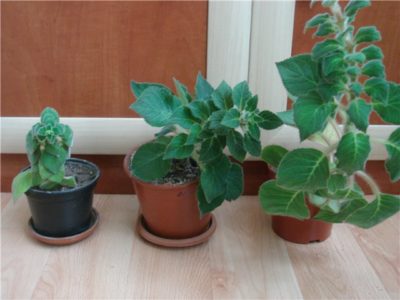
During the dormant period of calories, you need to provide a lower temperature, reduce watering
There are kaleria species that wither at the end of flowering. Then all aerial parts of the plant are cut off, leaving the rhizome in the pot. It is left in a cool dark (about 13 ° C) place. It is there until January, periodically the ground needs to be watered so that the roots do not dry out.
Table: how care errors are manifested and what to do to correct the situation
| Problem | Cause | What to do |
| Leaves turn yellow and curl | Too bright light, direct sunlight, too dry air. | Protect from direct sunlight. Spray the air around the plant more often. |
| Does not bloom or produces few flowers | Lack of light, few nutrients, cold or hot, waterlogged. | Move to another, more illuminated place, adjust the temperature regime and the mode of feeding and watering. |
| Brown spots on the leaves | Sprayed water. | You need to spray not the leaves, but the air around the plant. Water can also get on the leaves when watering. In this case, you can use bottom watering - pour water into a pan and put a pot on it. |
| Rot | Excess moisture in the soil. | Transplant kaleria. |
| Leaves dry and deform | Aphid. | Manual collection. |
| Spider mite. |
|
|
| Brown spots on the leaves | Watering with too cold water. | When watering, it is necessary to use settled water at room temperature. |
Description of the plant
Kaleria (koleria) belongs to the Gesneriaceae family; it grows naturally in the tropics of equatorial America.
The leaves of the plant reach a length of 15 cm, their surface is covered with a small red or white pile. The color varies depending on the type of flower (there are olive, bronze, silvery, dark green leaves with light veins).
Abundant flowering is especially appreciated by flower growers who breed the plant. Bell-shaped flowers of various colors, as a rule, with 5 petals, are arranged in 1-3 pieces. on the peduncle. Hybrids have cherry, amethyst and other interesting shades, but in nature this plant blooms with pink-white, red-orange, brown-white flowers. The petals are usually not monochromatic, but with a pattern - specks, strokes, stripes.

Kaleria flowers immediately attract attention
Kaleria is not picky about care, so it is not difficult to grow it at home.
The main types of flower
- Fluffy. The plant is quite tall - up to 0.8 m in height, with green leaves covered with reddish pile. Bright red flowers with yellow dots on the petals are very effective.
- Digitalis. Flowers are bell-shaped with a wide limb. The whole plant is covered with white hairs.
- Nice one. Leaves are silvery green with purple veins. The flowers are pink, small - about 2 cm.
Photo gallery: different calories
| Season | Lighting | Humidity | Temperature |
| Autumn winter | Well lit place, shaded from direct sunlight. | Prefers moist air, although it also tolerates dry air well. You need to spray the air around the plant, since the fleecy leaves of the kaleria react unfavorably to the ingress of water drops. Another way to provide the necessary moisture is to place the plant pot on a pallet of damp pebbles. | 20-24оС |
| Spring Summer | 17оС |
Control measures
Agrotechnical:
- thorough processing of row spacings and weeding in rows until the cultivated plants are completely closed in the aisles;
- obligatory removal of weeds from the field;
- deep autumn plowing in the early stages;
- control of weeds outside the fields by mowing before the flowering phase. (Maltsev A.I., 1939)
Chemical
Herbicide treatment. There are no herbicides registered from small petals in the "List of pesticides and agrochemicals", however, theoretically, preparations of the group of sulfonylureas, aryloxyalkane carboxylic acids, pyridine derivatives and other substances can be effective against this weed. (Fisyunov A.V., Handbook, 1984)
Chemical pesticides:
Spraying during the growing season:
- Monolith, EDG
- Grand Prix, EDC
- Referee, VGR
- Herbix, VRK
- Rapier, CE
- Megalith, BP
- Cicero, EDC
(State catalog, 2017)
Compiled by: P.I. Grigorovskaya, T.V. Zharyokhina
Planting malopa in open ground
Growing from seed to seedlings
It has already been mentioned above that malopa grown in a garden plot is an annual. That is why it has to be grown from seed every year.
This crop is grown through seedlings, while the time of sowing seeds depends entirely on the climatic conditions of your region. You can sow the seeds of malopa throughout the spring, the main thing should be taken into account that when the time comes for transplanting seedlings into open ground, the air outside should already be well warmed up. And it should also be borne in mind that even a slight frost can harm flowers.
Therefore, it is so important that return spring frosts are left behind.
Before proceeding with the direct sowing of seeds, you need to prepare special seedling boxes. They are filled with loose peat soil. Malopa seeds are small and can break easily if you press hard on them. Therefore, after they are evenly distributed over the surface of the substrate, they only need to be pressed a little into the soil. It is not necessary to sprinkle them on top with either substrate or sand.
After the seeds are sown, you need to moisten the crops. It is recommended to water them with a sprayer. This will protect the seeds from washing out, and you can also avoid stagnation of moisture in the soil mixture, which can negatively affect young immature seedlings.
Next, it is very important to cover the top of the box with transparent glass or film. This will help prevent the surface of the substrate from drying out and maintain the required moisture level.
Do not forget to systematically ventilate and moisten the crops, and immediately after the first shoots appear, be sure to remove the shelter. Young seedlings are rearranged in a well-lit place, protected from direct sunlight. They are also provided with regular, moderate watering. It is recommended to transplant seedlings into separate cups after the appearance of the first true leaf plates.
Landing in the garden
When planting grown seedlings of a hole in open ground, you need to be extremely careful not to injure both the stems and the root system of the plant.
The first step is to prepare the site for planting. The soil is dug in advance, while a little organic matter is introduced into it. Prepare the planting holes immediately before planting the plants. Their depth can vary from 50 to 100 mm. The row spacing, as well as the distance between the bushes, should be at least 30–35 centimeters. Plant malopa in prepared holes and water well.
Cultivation of malopa and lavater on a personal plot without seedlings, watering and feeding.
Ground cover and rosette small-petals
Small-petal carvinsky (Erigeron karvinskianus, syn. E. mucronatus)
He comes from Mexico, Panama; has been decorating flower gardens and flower beds in the south of Russia for a long time. On the southern coast of Crimea, this is a winter-green plant that winter well without shelter; the bases of the shoots are often lignified. Photo by the author
It is 15-30 cm high; in breadth grows up to 1 m. Leaves are small, elliptical-lanceolate, up to 4 cm long. Baskets are white, pink and purple when flowering; collected in 2-5 pieces. Blooms all summer and warm autumn (in the south).
Decorative variety - ‘Profusion’ (more compact: about 20-30 cm high and up to 50 cm wide). Photo by the author
Its flowering is always abundant.
Orange small petal (Erigeron aurantiacus)
A creeping or cushion-shaped perennial, 30 cm high and 30 cm wide. It comes from Central Asia. The small petal is orange. Photo from biolib.cz
Leaves are elliptical, spoon-shaped, pubescent, up to 10 cm long. Baskets are orange, with a yellow center, 5 cm in diameter; bloom in the summer.
Small golden yellow petals (Erigeron aureus)
A short-lived compact perennial 5-10 cm high and up to 15 cm wide as if created by nature for a rocky garden. Originally from the mountainous regions of Western North America, the petals are golden yellow. Photo from the site commons.wikimedia.org
Leaves from elliptical to spoon-shaped, gray-green, pubescent, up to 8 cm long.Blooms in summer, yellow baskets with a diameter of about 2 cm.
Ornamental variety - ‘Canary Bird’ 10-12 cm high, more resistant in culture. Small petal golden-yellow ‘Canary Bird’. Photo from the site nargs.org
It looks especially impressive against the background of stones.
2.Care for pittosporum at home
Spring Summer.

2.2. Reproduction - pittosporum from seeds
Half-ripe stem cuttings about 6 - 8 cm long. The lower leaves are removed from the cuttings and the bases are powdered with growth hormones. Rooting is carried out in a mixture of wet peat with sand under a glass or plastic cover for 1.5 months. Less commonly propagated by seeds.

2.3 Growing up
In the summer, the Pittosporum will appreciate being outdoors. To maintain a compact shape and a neat appearance, shoots that are too long are cut to the required height. By trimming the pittosporum can be shaped to any desired shape.

2.4 Transplant
Pittosporum is transplanted in the spring, about once every 2 years. In large tub plants, the top layer of soil is changed to a fresh one annually.

2.5 Temperature
Moderately cool content at a temperature of about 18 - 20 ° C. This plant does not like intense heat. During the winter months, allow a cool dormant period at 10 ° C. Do not expose plants to temperatures below 7 ° C.

2.6 Lighting
Plants should receive about 3 hours of direct sunlight daily in the morning or evening hours. Shade your pittosporum in hot summer.
2.8 Fertilizer
During the growing season, feed with liquid fertilizer every 2 weeks. In the fall, feeding is stopped and resumed only with the beginning of a new growth.

2.9 Spraying
Pittosporum does not need spraying, but will do well in constantly ventilated areas with good air circulation.

2.10 Watering pittosporum
During the growing period, water abundantly, soaking the soil completely; after watering, excess moisture from the pan should be removed. Dry the soil to a depth of about 2 cm between waterings. In the winter months, when the temperature of the content drops, reduce the frequency of watering to a minimum, being careful not to dry out the entire soil.

2.11 Diseases and pests
If the temperature is too low, the plants shed the lower leaves. If there is insufficient drainage, the plants will rot.
Insects that can harm the flower are spider mites, scale insects, mealybugs, thrips.
Insects are pests
| Insect name | Signs of infection | Control measures |
| Mealybug or felt insect | The surface of the leaves and shoots is covered with fluffy, cotton-like white bloom. Plants are lagging behind | Folk remedies: spraying with soap and alcohol solution. Infusion of tobacco, garlic, cyclamen tubers, alcohol treatments, pharmaceutical tincture of calendula proved to be good. Chemicals: green soap solution, Actellik, Fitoverm. |
| Spider mite | Subtle spider webs on the leaves, yellowing and foliage falling off with extensive lesions. The surface of the sheet plates becomes dead and covered with small cracks. Plant development slows down. | Folk ways. Plants can be rinsed in the shower and left in the bathroom in a humid atmosphere for half an hour. Irradiation with an ultraviolet lamp every week for 2 minutes. Chemical preparations based on pyrethrum, sulfur powders, Fitoverm, Actellik. |
| Thrips | The appearance of yellow spots on the leaf blades, small brown dots can be observed on the underside of the leaves. When spread, the pests cause the leaves to turn yellow, dry and fall off. | Folk ways. Increase the humidity of the air, wipe the surface of the leaves with soapy water to reduce the number of pests. Preparations based on pyrethrum - 2-fold treatment with an interval of 7 - 10 days, spraying with tobacco infusion, infusion of yarrow or Persian chamomile, decoction of cyclamen tubers. Chemical preparations: dusting with sulfur powders, the use of anabazine - sulfate in a soapy solution. |
| Shield and false shield | Sticky droplets on the leaves, small yellow spots on the surface of the leaf plates.With a large spread of scale insects, they contribute to the drying and falling of leaves. Flowers slow down their development | Folk methods of struggle. Spraying with soap and alcohol solution. Scabbard larvae do not like garlic infusion; they also use pyrethrum-based products. Chemicals. Fitoverm, Aktellik, Fufanon. |
-
Mealybug
-
Spider mite
-
Thrips
-
Shield
2.12 Purpose
Miniature Pittosporum varieties can be grown as ground cover plants. Good for bonsai cultivation.
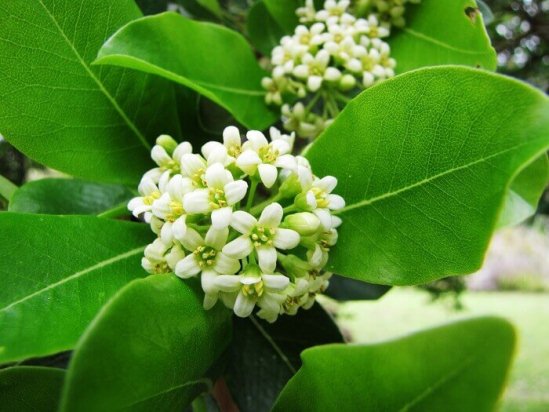
Note.
Hydroponics.
How does Xerula root look
Xerula root, or Colibia tailed, attracts the eye with an interesting appearance. A small, small cap sits on a thinner, longer stem. Root Xerula resembles a carnation driven into the ground.
Description of the hat
Due to the long thin stem, the cap seems small, not paying attention to the fact that it can reach a diameter of 2-8 cm.In young specimens, it is hemispherical, straightens with age, becomes flat, while maintaining a small tubercle in the very center.
The wrinkled surface is covered in mucus and painted in olive, muddy lemon, or dark gray. The part below has even, sparse plates painted white or cream.
Leg description
Xerula has a long, thin root leg, which can reach up to 20 cm in length and about 1 cm in thickness. It is buried 15 cm into the soil, is often intertwined and has a non-standard rhizome. The fibrous pulp is covered with countless scales, which are painted pure white at the very base and gray-brown closer to the surface of the soil.
Fatfoot honey fungus (Armillaria gallica)
Synonyms:
- Armillaria bulbosa
- Armillaria lutea
- Bulbous mushroom
Armillaria gallica is a species of fungi included in the genus Armillaria of the Physalacriaceae family.
Hat:
The diameter of the cap of the thick-legged honey fungus is 3-8 cm, the shape of young mushrooms is hemispherical, with a curled edge, with age it opens to almost open; the color is indefinite, on average rather light, grayish-yellow. Depending on the place of growth and the characteristics of the population, there are both almost white and rather dark specimens. The cap is covered with small dark scales; as they grow older, the scales migrate to the center, leaving the edges almost smooth. The flesh of the cap is white, dense, with a pleasant "mushroom" smell.
Plates:
Slightly descending, frequent, yellowish at first, almost white, acquiring an ocher color with age. In overripe mushrooms, characteristic brown spots are visible on the plates.
Spore powder:
White.
Leg:
The length of the leg of the thick-legged honey fungus is 4-8 cm, diameter is 0.5-2 cm, cylindrical, usually with a tuberous swelling at the bottom, lighter than the cap. In the upper part there are the remains of the ring. The ring is white, cobweb, delicate. The pulp of the leg is fibrous, tough.
Spreading:
Fatfoot honey agaric grows from August to October (sometimes it comes across in July) on rotting tree debris, as well as on the soil (especially on the spruce litter). Unlike the dominant species Armillaria mellea, this variety, as a rule, does not infect living trees, and it bears fruit not in layers, but constantly (though not so abundantly). It grows on the soil in large groups, but, as a rule, does not grow together in large bunches.
Similar species:
This variety differs from the "basic model" called Armillaria mellea, firstly, in the place of growth (mainly forest litter, including coniferous, less often stumps and dead roots, never living trees), and secondly, in the shape of the leg ( often, but not always the characteristic swelling in the lower part, for which this species was also called Armillaria bulbosa), and thirdly, a special "spider-web" private veil. You can also notice that the thick-legged honey agaric is, as a rule, smaller and lower than the Autumn honey agaric, but this sign can hardly be called reliable.
In general, the classification of species previously united under the name Armillaria mellea is an extremely confusing matter.(They would have combined further, but genetic studies have inexorably shown that fungi, which have very similar and, what is most unpleasant, very flexible morphological characters, are still completely different species.) A certain Wolf, an American researcher, called the genus Armillaria a curse and disgrace of modern mycology, with which it is difficult to disagree. Each professional mycologist, seriously dealing with mushrooms of this genus, has his own view of its species composition. And there are many professionals in this row - as you know, Armillaria is the most dangerous parasite of the forest, and they do not spare money for its research.
Edibility:
One of the most popular commercially harvested mushrooms.
Pickers are generally reluctant to distinguish between autumn mushroom varieties and are easy to understand.
Description of the mushroom
The genus Mutinus belongs to the Veselkov family. The mushroom can be eaten while it is in the egg shell. Latin name - Mutinus caninus, Cynophallus caninus, Ithyphallus inodorus, Phallus caninus. There is no second name in Russian.
The egg shell of a young mushroom is an oval body up to 3 cm in diameter, often white, less often pinkish. May have an elongated shape. Then it grows up to 18 cm in length and only 1.5 cm in diameter, when ripe, it bursts at the apex, usually in the region of the third blade, remains at the base of the mushroom. The stalk gets rid of the shell, and the spores mature.
The recipe (stem) has a cylindrical shape, sharpening at the top. It can reach a height of up to 12 cm, the thickness is no more than 1 cm. It is hollow inside, the texture is spongy, it seems that it is translucent. The color is often pinkish, sometimes with orange or reddish tints. The top of the mushroom is pale, with a pinkish tone, without a cap. Instead, a greenish gleba (spore mucus) covers the top of the head, exuding a smelly, absolutely unbearable smell.
Canine mutinus is included in the Red Book of the USSR and Russia, as a rare species, it can be found in the Murmansk and Leningrad regions, Krasnodar and Stavropol Territories, as well as in the Tomsk Region and Primorsky Territory. Outside the territory of Russia, it is found in Estonia, Lithuania, Ukraine, Georgia, Armenia.
For the first time found and described this species by mycologist and botanist from Great Britain William Hudson in 1849. At that moment, the canine mutinus and Ravenel were not distinguished, and therefore they were considered one species, a little later, scientists found differences in them and divided them.
Udemansiella (Xerula) root: photo and description
| Name: | Xerula root |
| Latin name: | Hymenopellis radicata |
| Type of: | Edible |
| Synonyms: | Udemanciella root, Collibia tailed, Root money, Collybia radicata, Oudemansiela radicata |
| Specifications: |
|
| Systematics: |
|
The mushroom kingdom is very diverse. In the forest, you can find mushrooms that look like barrels, flowers, corals, and there are those that are very similar to graceful ballerinas. Interesting specimens are often found among the mushroom representatives. Xerula root looks very original, thanks to a thin, long leg and a miniature hat. Very often mushroom pickers do not collect this species, not knowing that the mushroom is edible and contains a large amount of nutrients.

